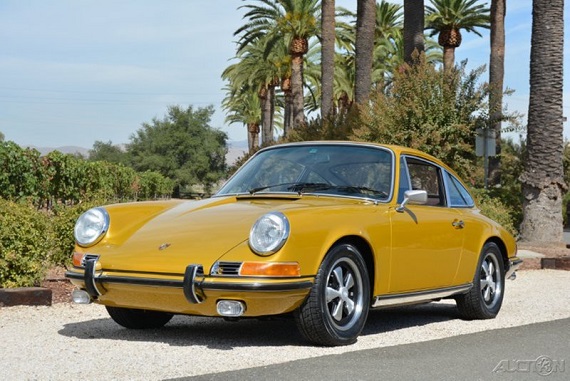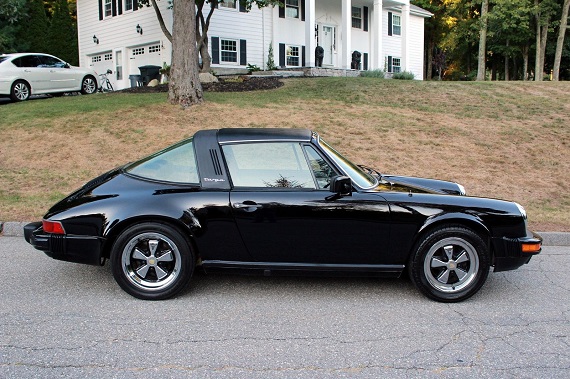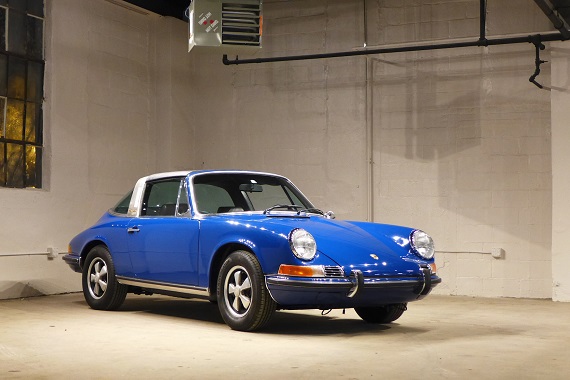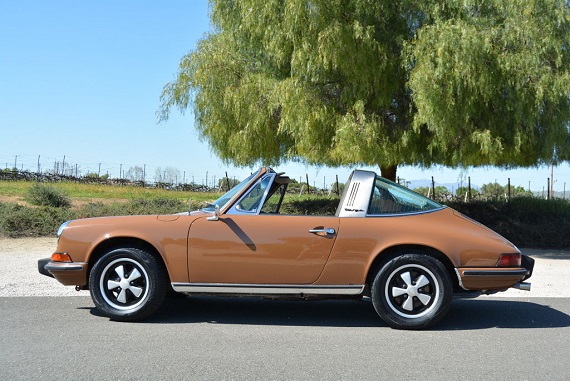I have been reading over the past months how the market for long-hood Porsche 911s has begun to stagnate as buyers shift away from these early examples in favor of, predominantly, various iterations of the 911 Turbo. Those statements correlate well with where I’ve seen various auctions as bidding and asking prices appear to have reached a plateau with only the most exceptional and rare examples commanding any significant premium. While none of these early cars can be classified as inexpensive there at least now is an opportunity to exercise patience without concern that your patience might result in paying a much higher price down the road. Another possible advantage may reside with exactly a car like the one we see here, the 911E. As the mid-tier model of the 911 the E provided meaningful upgrades to interior comforts and engine performance over the entry-level 911T, including the use of mechanical fuel injection similar to that of the top-tier 911S, but without the significant increase in value we see with 911S. This particular example also comes in a very unique, and period-correct, color combination: a Gold Metallic 1972 Porsche 911E with Brown leatherette interior. Of the various years of long-hood production, many consider the 1972 to be the best given its unique use of an external oil filler. The purpose was to provide the car with better balance, but after one year it was moved back to its original location after confusion arose distinguishing it from the gas tank. We can hope current owners will suffer no such disorientation and then will be left with one of the more unique 911 models.
Tag: 911E
As the title of this post should make clear we’re going to need to ask a lot of questions about this Porsche 911. In general, its appeal will be limited as almost any car of this sort will be. It’s not original, nor will it ever have any collector value, and our most pressing question will remain, “Why?” That aside I do think there is some appeal here and for the right price this could make for a pretty fun 911 that melds a variety of classic models into what hopefully is a coherent whole. Let’s start with what we have here: this 911 began as a 1972 Porsche 911E Targa, which, for reasons that are unclear, was rebodied as a 1978 911SC. The current owner does not why, but seems quite confident this change was not due to an accident or any other nefarious conditions. Maybe whomever owned it at the time preferred the redesigned look, we don’t know. Added to this new body was the engine and transmission from a 1986 3.2 Carrera. So that’s our frankenstein 911 we see here. It has the lightness of the long-hood 911, wrapped in the skin of the impact-bumper-equipped 911SC, all surrounding the more modern heart of the 3.2 Carrera. In total, given the aesthetic similarities between the 911SC and 3.2 Carrera, what we end up with is basically a lightened 3.2 Carrera, and if everything is properly sorted that in itself is not a bad proposition at all!
CLICK FOR DETAILS: 1972 Porsche 911E Targa/911SC/3.2 Carrera on eBay
5 CommentsThe very pretty Ossi Blue 1969 Porsche 911E Targa, which has been fitted with the engine from a 3.2 Carrera and which we featured at the end of March, is back up for sale this time as a reserve auction. Since it failed to sale with a BIN price of $74,500, this auction should give us some sense of the value of this somewhat unique 911E.
CLICK FOR DETAILS: 1969 Porsche 911E Targa on eBay
The below post originally appeared on our site April 13, 2015:
1 CommentPerhaps like a neglected middle-sibling, the mid-range model of any car can live a somewhat precarious existence. Lacking the comfort or performance (depending on what sort of car we’re talking about) of the top-of-the-line model and more expensive than the entry-level model, that car in the middle can sometimes seem neither here nor there. They’re stuck and sometimes go unnoticed. For much of the 911’s life there was only the entry-level 911 or the high-performance 911S, but for the early cars we had another option: the 911E. First released in 1969, the E took many of the aspects of the 911T and simply made them better. It featured a mechanically fuel-injected flat-six engine, similar, though with less power, to that of the 911S, rather than the carbureted engine of the 911T. In addition, a more comfortable strut suspension was made available along with ventilated disc brakes, while the interior was upgraded to improve comfort and refinement. By the time we arrive at the final model year in 1973, all 911 engines had increased to 2.4 liters and featured Bosch fuel injection with the E and S being mechanically injected and the T eventually using the CIS system that later 911s would employ until 1984. During its brief run the E served as the refined, luxurious, counterpart that was to balance the decidedly sporty experience of the S and the more basic experience of the T for buyers who wanted more from their 911, but leaned toward the luxury side of the spectrum. The example we see here comes from the final model year: a Sepia Brown 1973 Porsche 911E Coupe, located in California, with 87,000 miles on it.
CLICK FOR DETAILS: 1973 Porsche 911E Coupe on eBay
Comments closedBrown is always a tough car color for most people, even if it does possess a period-correct quality that many look for in classic cars. Sepia Brown is a color we come across pretty frequently on long-hood 911s, but then it disappears once we get to the mid-year 911 and beyond. It seems to have been a color that briefly was in demand, but that demand quickly fizzled. Part of me understands that completely as I have a greater appreciation for metallic browns than their non-metallic counterparts, and while there is a lightness and earthiness to Sepia Brown I think ultimately it would wear on me. The 911E, however, is a model I love and these early Targas I find particularly appealing. A 911E Targa offers one of the best chances at getting into a long-hood 911 while avoiding six-figure price tags (and even with these cars that can be difficult), while still getting a reasonable degree of performance as compared with the entry-level 911T. This one should fit that bill fairly well: a Sepia Brown 1973 Porsche 911E Targa, located in California.








